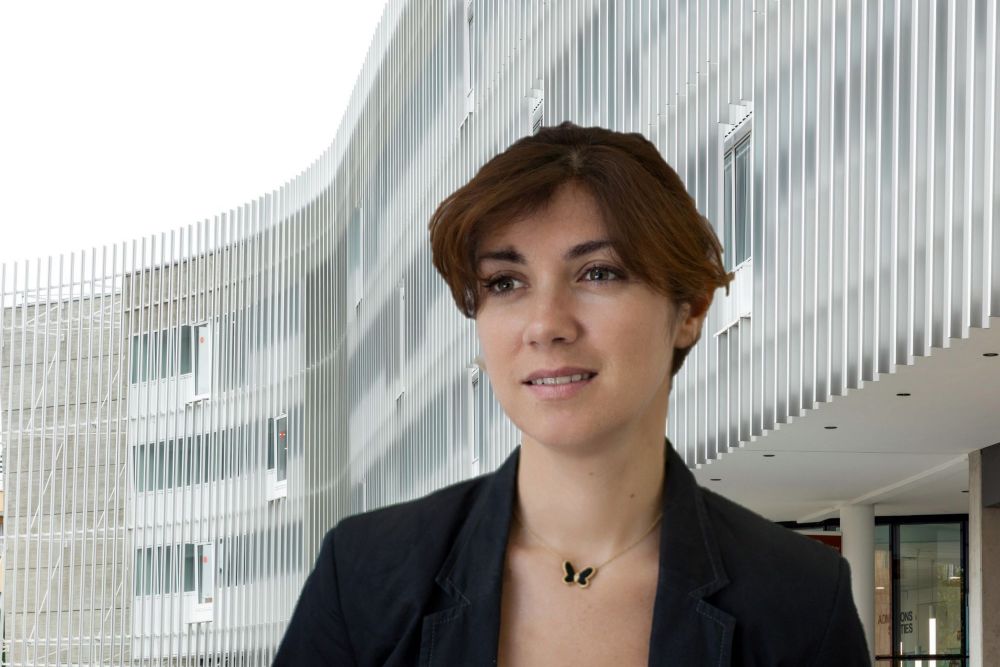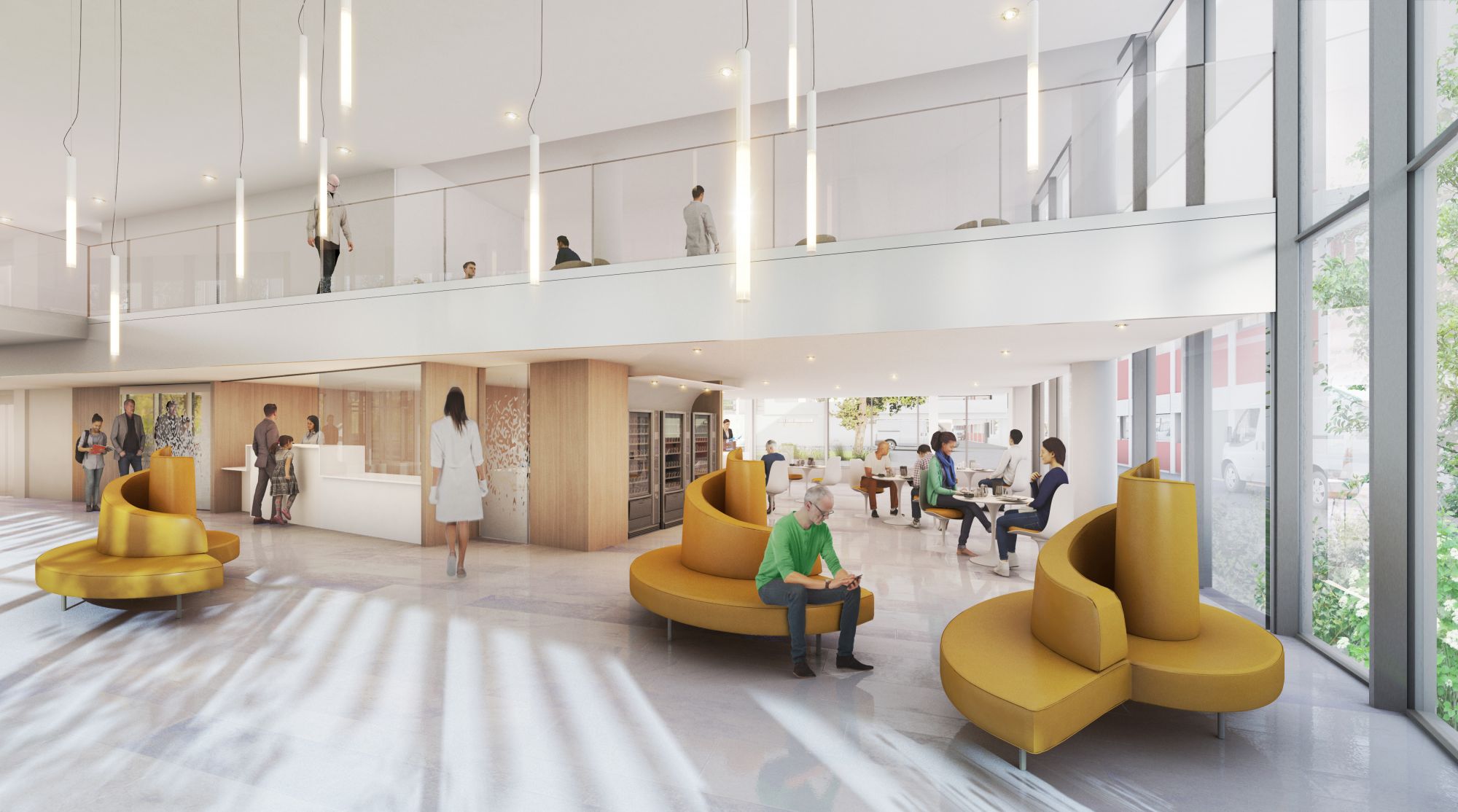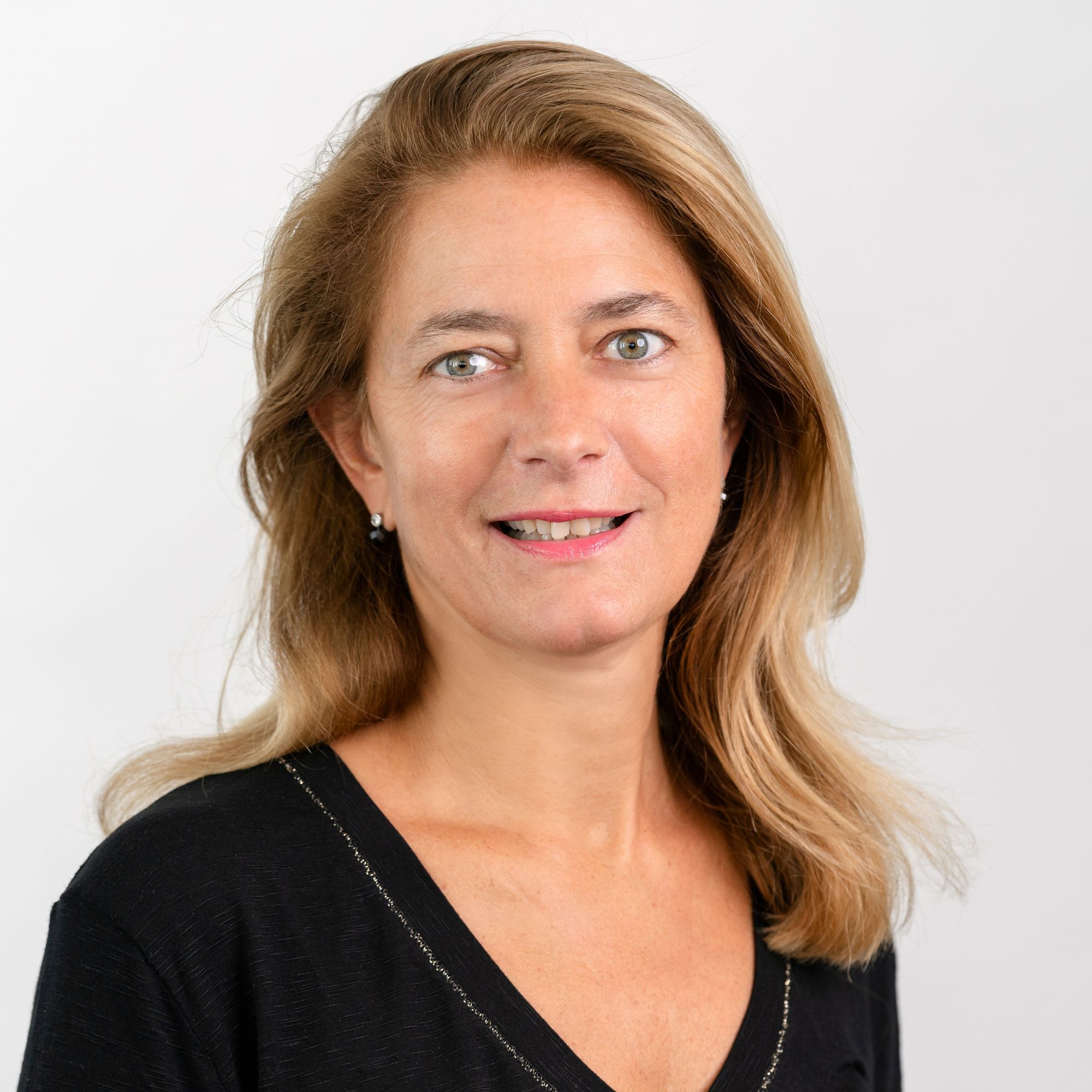- Home
- EN
- Kardham Group
- News
Saint-Exupéry Clinic - Interview with Marie Laurent, architect
November 2020

Interview with Vincent Lacombe, General Manager of Clinique Saint-Exupéry and Marie Laurent, architect Kardham in N ° 34/35, Covid Special Edition of Architecture Hospitalière.
During the health crisis, Kardham lived through singular hours, between confinement and encouragement to continue work on many sites, and in particular the Saint-Exupéry Clinic in Toulouse, following a derogatory administrative authorization. The establishment had to be able to accommodate, both in accommodation and in intensive care, pathologies specific to the dialysis establishment, but also patients with Covid-19. The new building was then under construction and did not have an opening agreement from the safety committee, leading to legal, administrative and liability problems. The complexity therefore consisted both in managing an administrative / legal imbroglio and a technical activity disrupted by health protection measures.
Can you tell us about Clinique Saint-Exupéry?
Vincent Lacombe: The Saint-Exupéry Clinic opened its doors in 1975 to exclusively care for patients with renal failure with hemodialysis stations, a nephrology consultation platform and associated logistical functions. In 1990, when the establishment had already received an authorization to integrate six medical beds, it received the agreement of the authorities to expand its capacities in the treatment of Chronic Renal Insufficiency (CRF) and referral hospitalization. nephrological. A second building was therefore built with a post-beam structure allowing all subsequent developments.
How would you define the operation carried out today by Kardham on the Clinic site?
Marie Laurent: It's a very complex project. This is a private market, with independent clinic management. Historically, this clinic was highly specialized in the treatment of kidney disease, little used to other specialties. We faced, with my colleague Pierre Fernandez, a very "co-constructed" project, the program and budget of which were not completely decided, without estimate and without AMO. The orientations of the owner were evolving, its needs evolving according to innovations. The advisory role within our mission has proven to be significant. This lack of a strict framework gave rise to a project in motion, sometimes difficult to follow, but the objective was therefore to design a clinic that was as qualitative as possible in terms of equipment and patient care. The intentions and high standards of our client have thus pushed us to expand our mission.
How did this project get started ?
M. L .: This project is at the same time a new clinic, an extension and a renovation. As the Saint-Exupéry clinic was small and specialized only in dialysis, it needed another establishment for its mandatory laboratory and imaging activities. For reasons of proximity, she joined forces with the Saint-Jean Languedoc general clinic, which was nearby, in order to constitute a reference urological site. Subsequently, the latter having been bought by the Ramsay group, it was moved to the outskirts to merge with several clinics in Toulouse.
Why did you not attend the Saint-Jean Languedoc clinic in the peri-urban area?
V. L .: The Saint-Exupéry clinic has always wanted to be part of a local approach. The treatment of Chronic Renal Insufficiency requires three hemodialysis sessions per week of three to four hours and requiring additional trips to the patients was not an option. The establishment has always been keen to be present throughout the Haute-Garonne. For this reason, the territorial network of its offer includes ten locations from Bagnères-de-Luchon to Brax. Finally, this desire to keep its historic location also responded to a request from general practitioners in the area.
What are the main lines of the program?
M. L .: The program was born out of the need to create a radiology department, a laboratory and consultation stations to which the clinic wanted to add a few accommodation beds. The only land available for new construction was where the existing parking lots had to be buried. As work was going to be carried out on site to construct a new building, the management of the Clinic wanted to have an additional 50% potential in order to develop the consultation activity in the future. By adding a laboratory, medicine beds and doubling the consultation capacity, the support functions therefore became insufficient and we therefore had to work on logistics, in particular the kitchen, pharmacy, servers, bio-cleaning and storage. To expand these support functions, it had become essential to invest in what already existed to carry out drawer operations. In addition, upon completion of the underground car park in 2018, the clinic received approval from the ARS for an additional 70 SSR beds which had to be integrated on two new floors. This evolution of the program over time has proven to be a challenge both architecturally and financially.
What are the urban challenges of this project?
M. L .: Thanks to the Saint-Jean Languedoc clinic, the Saint-Exupéry Clinic benefited from access by the Revel road, which is a major road in Toulouse. With the move of this partner, this direct access was lost and the clinic regained its historic entrance on rue Emile Lecrivain, a little less prestigious, narrower and difficult to access. We therefore had to recreate a sign on this small road. During the work, it appeared that the temporary deviation installed for the site offered the necessary setback for a square and an entrance worthy of the name while erecting a facade in R + 4. Thanks to this authorization to divert the road, the facade was no longer embedded between apartment buildings. A breakthrough in the middle of the building was nevertheless made because the objective remains to one day be able to connect the Saint-Exupéry clinic on the road to Revel.

How did you integrate this project in relation to the existing building?
M. L .: As part of the project, we respected the geometry and modenature of the existing facades. The original building was small in size as it was on two levels while the new one has four. This work on the facades was carried out in collaboration with a plastic artist and incorporates characteristic elements such as vertical sun shades in shiny polished aluminum to protect themselves from a south-facing orientation. The link with the existing is natural since the new building is established in contact with the old one. The continuity of consultation services is simple and the extension which offers a different medical orientation has been effectively linked to the clinic.
The new organization of the clinic was designed in a continuous search in terms of performance of care, patient comfort, and reception of visitors. How does the architecture promote patient comfort?
M. L .: The architectural quality represents a considerable financial investment which testifies to its qualitative ambition. The clinic wanted to give new meaning to this neighborhood and is defined as a point of conversion that people can go through. Important work has been carried out on the reception hall with a magnificent cafeteria to provide conviviality. This hall is intended to be very generous and must guarantee good flow management as well as an optimal quality of orientation thanks to the signage to ensure the comfort of patients and visitors as soon as they arrive in the building. While waiting for the arrival of the metro in 2030, the clinic offers plenty of parking spaces, a real challenge for simplifying user access. The architectural comfort is also found inside, especially in the bedrooms. On this point, we had no room for error: the requirement of excellence of the contracting authority and its so precise knowledge of its specialty and its needs brought the design to levels of detail rarely achieved. It has been very enriching around the dialysis activity. Finally, patient comfort also depends on the choice of materials, which occupies an important place.
How does architecture improve working conditions for staff?
V. L .: The clinic was created by Doctor Jean-Michel Pujo and has always been administered with the professionals who are the actors. Our leitmotiv is to respect the needs of the medical sector in a compact structure favoring short and functional flows. Our extension project pursues this vision with vertical links connecting parking spaces, consultation and hospitalization areas
days which are among the shortest. The quality of the materials used ensures the sustainability of its premises and the efficiency of the building. The activities of the clinic generate significant flows of stretcher and patient transport. We therefore worked extensively on the wall protection elements at several heights and favored durable solutions for the most frequented traffic routes. Our
Kardham's claim went beyond architectural drawing. We wanted to have more support in the choice of materials, furniture and signage. These choices are fully in line with our approach to developing the quality of life at work. We wanted to identify the spaces according to the professionals to whom they are dedicated and integrate a cafeteria reserved for ambulance attendants. We are studying the establishment of more meeting or training time to strengthen the sharing and promotion of the clinic's medical project. We also aspire to be part of innovative approaches in architectural computing through a 3D design project and a BIM model that can be used for operation.
What is the place of natural light?
M. L .: Natural light is everywhere. We have done a lot of work on visual comfort for bedridden patients with lowered sills, large panes of glass, fixed with motorized blinds electrically adjustable from the bed and translucent colored glass shutters which contribute to the ergonomics of the rooms. In addition, and in order to protect these panes from solar heating, a device for a sun visor in extruded and microperforated thermo-lacquered aluminum is installed.
How did the health crisis impact the site?
M. L .: Despite the many difficulties encountered, we had decided to keep the date of the safety committee on March 10 by asking companies to work at a very high pace. While considerable work has been done in a month, these efforts have not been sufficient to allow an opening to the public and the safety commission then gave us a new deadline, April 15, to respond to its various requirements. However, after this visit, we quickly found ourselves facing a new obstacle with confinement as of March 17 and the implementation of teleworking. Then, faced with the growing influx of COVID patients and the needs of Toulouse hospitals, the ARS issued an exceptional exemption to open to all buildings capable of receiving patients. Despite the safety committee’s initial reservations, the Saint-Exupéry Clinic was therefore able to open the two new hospital floors thanks to the return to the site of half of the companies in very difficult conditions. This provision of the premises required immense legal and administrative work as well as site monitoring made extremely difficult due to the confinement. Finally, despite all the obstacles, on June 15, the security commission returned to deliver a favorable opinion for a definitive opening to the public on September 3, thanks to this collective effort. Even today, the last reservations must be lifted but the premises are occupied and COVID is still present, which does not facilitate the completion of the operation.
What is your assessment of this period of health crisis?
M. L .: With willpower, we can achieve great goals! This is the first lesson I want to take from this very complicated time. We have designed a beautiful building and we are all very proud of it. Our architectural projects can only materialize with the help of companies and, on this operation, despite all the difficulties encountered on the site, we succeeded! Favoring local businesses seems important to me for involvement and human relations. In this very special context, they showed kindness and were able to provide the necessary efforts for this project to succeed. Building a hospital cannot be done alone!
Show more
Discover the Saint-Exupéry Clinic project

